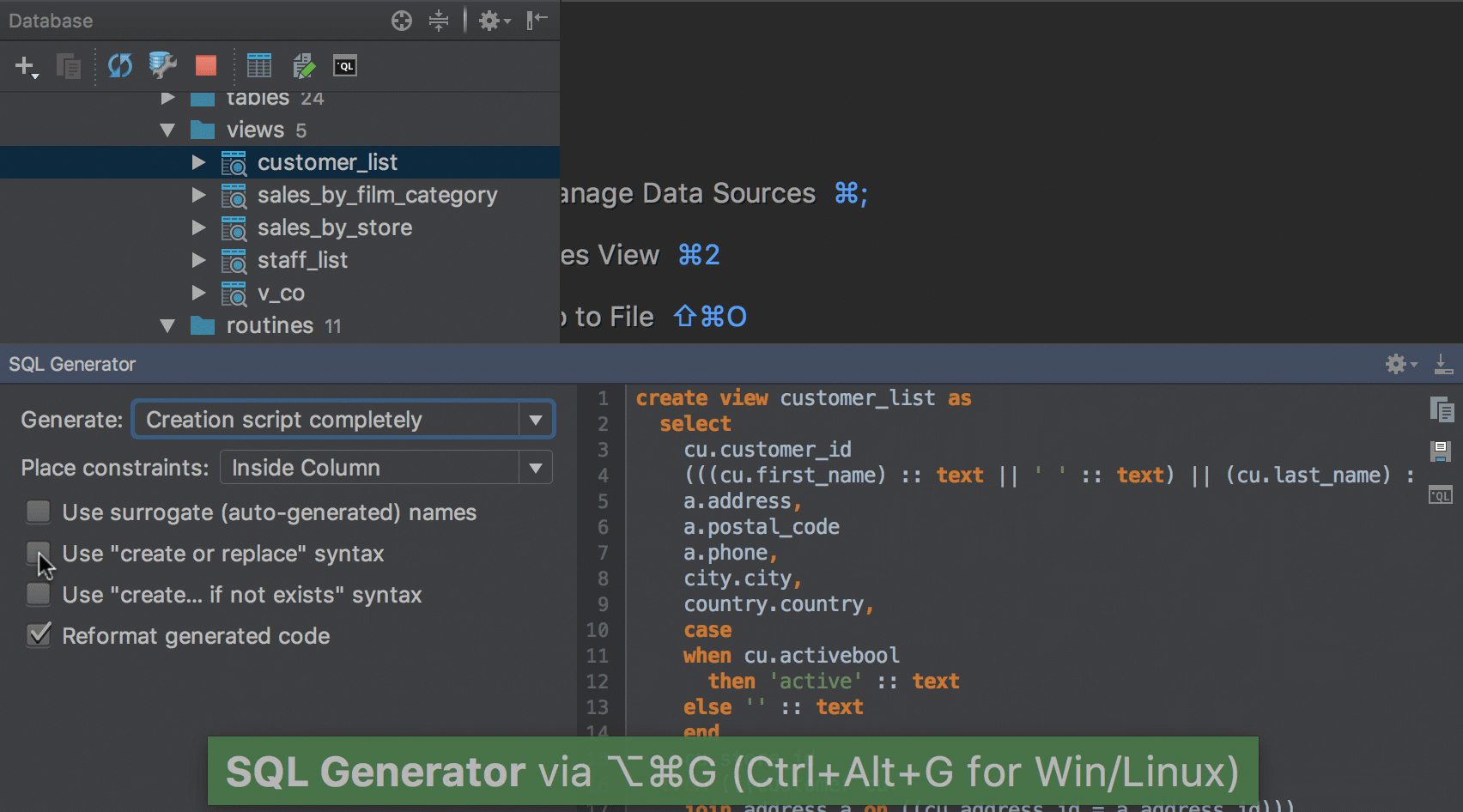

There is a better way to create and share diagrams for existing databases - Dataedo. An entity relationship diagram (ERD) portrays relationships between entities (otherwise known as actors) in a system. To export diagram go to menu, select File, then Export, select one of the available formats and provide folder and filename.
#Datagrip er diagram how to#
In this tutorial I will show you how to create Entity-Relationship Diagram (ERD) with DataGrip.When your diagram is complete and safe it you can export it to png, pdf, ps or svg. Use DataGrip to create a database schema, add test data, and export SQL for both. It is saved in a MySQL Workbench model in a. Once you have completed your diagram make sure to save it. To manually arrange tables simply select them and move around when you feel they fit best. To use autoarrange go to menu, select Arrange and Autolayout. Content pane Select the checkboxes next to the elements to be shown on diagrams. For more information about creating diagrams, see Database diagrams.
#Datagrip er diagram manual#
To arrange tables you can try autoarrange option, but you'll need some manual work on top of that. Ctrl+Alt+S In the Diagrams menu, you can configure the default visibility settings and layout for diagrams. To remove table from diagram select it, right click and choose Remove Figure option.īe careful not to choose Delete option as it will remove table not only form diagram but also your model catalog. What you probably want to do right after you created a default diagram is to remove unnecessary tables and views and arrange tables to make it easier to grasp.

Your new SQL database diagram > will reflect all the objects and existing connections simplifying further analysis. For this, navigate to Database Design > New Database Diagram and dragg and drop your database objects from Database Explorer to the diagram. When the process ends with success you get a new model (more about models here) with default diagram with all tables and views. You can create a database diagram from the Start Page. Final screen shows you a summary of the import. Wait for reverse engineering to take place and when done continue with Next. On next screen you have an option to select object types and filter specific objects. Wait for the schemas being read and continue with Next. Draw ER diagrams and generate SQL or schema creation scripts. Select the ones you want to reverse engineer. ER diagram tool for PostgreSQL, MySQL, MariaDB, SQLite, schema designs for MongoDB and GraphQL. When successfully connected wizard will show you list of available schemas on the server. Wait for the connection and click Next again. Provide connection details to your database and click Next. To reverse engineer database go to menu Database and choose Reverse Engineer. Learn about reverse engineering and models in MySQL Workbench To create a diagram from existing database you need to use reverse engineering functionality to create a model. Now with the datasource setup, simply generate a diagram like you would for any other datasource.This artcle will show you how to create a diagram for existing MySQL or MariaDB database using MySQL Workbench. In addition to the reverse engineering functionality, it also supports import from GraphQL scripts. In the bottom of the create datasource wizard window, you can click the + button to add a DDL file from the folder you specified in the first step. The tool allows you to reverse engineer existing databases and visualize the structures in the form of an entity-relationship diagram. This will be a directory on your computer that you store your DDL statements in.Ī DDL data source can be created by choosing the option in the normal "create datasource" dropdownĪdd the DDL file to the data source in the creation window DataGrips most important features are: Script generation. In the right hand side you should see an icon to click that will allow you to attach a directory. To share diagrams, use the PNG format so other users will be able to open the file. This has the benefit of not needing to connect to a database. This will take you through generating an ERD from DDL statements using jetbrain's database IDE "Datagrip". Add the DDL file to the data source in the creation window.Erd ddl database diagram datagrip Table of contents


 0 kommentar(er)
0 kommentar(er)
